This starting-point of intra-family violence also led us to take an interest in the history of the Reunionese society, which developed over three and a half centuries, and more particularly in the work of memory around slavery, a memory which appears truncated, incomplete from the genealogical point of view, based on violence and which may lead to repetition of trauma. This thesis was thus justified by the absence of studies covering the topic, compared to the research carried out in the United States (Fohlen, 2007; DeGruy, 2004; Eyerman, 2001), the Caribbean (Charles-Nicolas, 2018; Mulot, 2007; Ganem, 2012; Fanon, 1952) and Latin America (Andrews, 2014). In Reunion, certain academics (historians, anthropologists, sociologists etc.) have been developing research on this topic of slavery: according to them, the memory of slavery appears to have been limited to an oral tradition (Eve, 2015; Fuma, 2005; Ghasarian, 2002; Benoist, 2001; Honoré, 1994), but it seems that the law of silence and the weight of denial take the upper hand (Eve, 2010; Hoarau, 2010; Reverzy, 2008; Vergès, 2006; Gerbeau, 2005). The official history is thus marked by a large number of unknowns, the denial of the potential trauma having been reinforced by policies applied on the island in the post-war period.
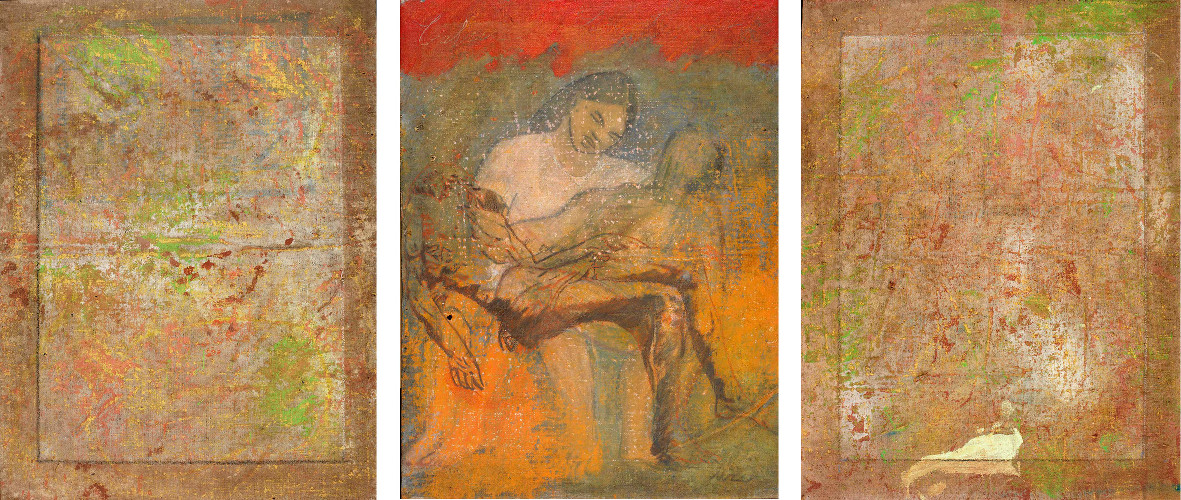
The original character of the research we carried out also resides in the application of two theoretical fields of study that are quite separate but complementary, these being anthropology and clinical psychopathology. We should remember that psychoanalytical anthropology treats intergenerational issues through the transmission of phylogenetic traces, that is to say related to the evolving history of a species, transmitted throughout humanity since its origin and inscribed within the family of today. They concern the laws, prohibitions and the unifying position of the symbolic function of culture in the family. In this perspective, Yolande Govindama, who directed my thesis, had already put forward the hypothesis that “the anthropological and historical approach to the topic, to the family, would make it possible to restore a symbolic lineage guaranteeing the fundamental taboos of humanity, thus avoiding a breach in transmission” (Govindama, 2011).
Could the violence expressed today in a number of Reunionese families be an identifying link to a traumatic filiation repeated from generation to generation? This is one of the theoretical hypotheses raised during this research study. The first person to raise the issue was Franz Fanon (1952), in Martinique, in connection with an approach linked to mental health issues. It was then raised again by authors such as Aimé Charles Nicolas (2018), who studied the notion of historical traumatism, research which needs to be developed today, concerning the interpersonal relations and the psychopathology that it can lead to.
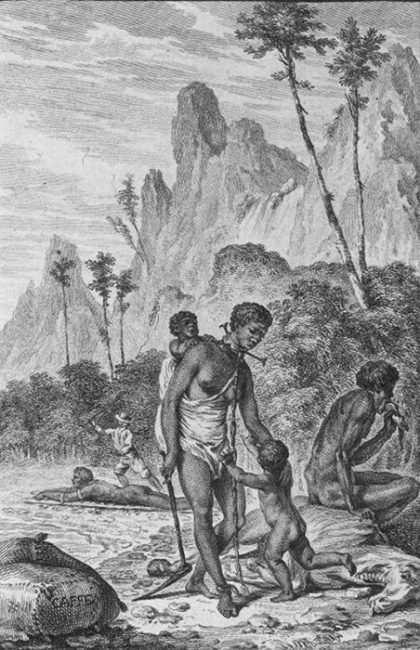
During the exploratory phase of this research work, we attempted to analyse the first level of discourse of the subjects studied, which made it possible to identify the factors commonly present in the context of domestic violence: a fragile family history, as well as a sensitive environment, anxio-depressive disorders, personality issues, psychosomatic disorders, problems of attachment, addiction, post-traumatic stress, in certain cases leading to self-harm or hetero-aggressive violence (suicide, aggression, violent crimes…).
How to take into consideration these known factors and attempt to find a clinical meaning for the repetitive behaviour thus generated: how to understand the absence of manifested symbolism? This recurring appeal, a call to express what has so far not been heard, continues to come up against a void, within a potentially traumatic parental transmission. However before doing so, it appears essential to set the socio-cultural context of Reunion island from 1663 to 1848, in order to illustrate the historical and anthropological basis.
Contemporary Reunionese society was constructed around two opposing realities on the island: demographic, economic and tourist expansion, starting from when the island became a French department in March 1946, and its colonial past, with the period of slavery linked to the triangular trade, which was the origin of settlement in this French overseas territory.
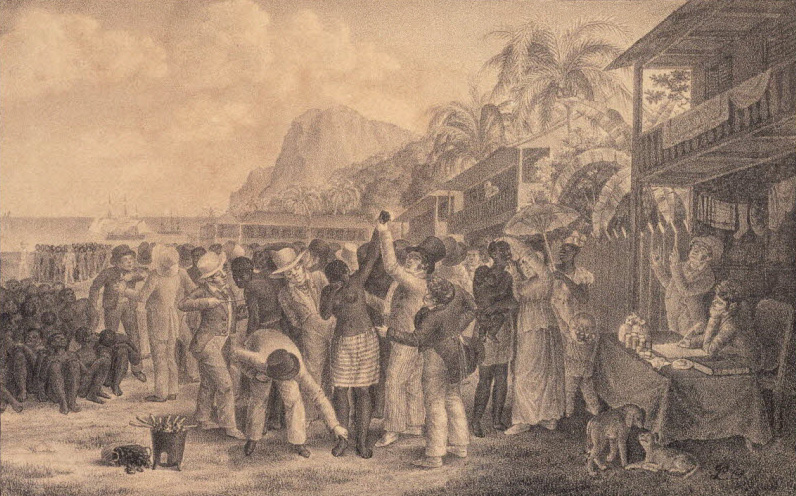
Today’s society on Reunion island bears the traces of several types of racial mixing. Indeed, from the early days of settlement, the population encountered several types of closely interlinked cultural dynamics. Its different elements were subject, to various degrees, to juxtaposed processes of assimilation, racial mixing and cultural reformulation (Ghasarian, 2003). We must also bear in mind the archaic structure of the system of slavery, modelled on a European capitalist system of the period, in order to understand the cradle of Reunion’s population, entirely imported into the island. Certain historians describe local slavery as being a hybrid form of that which existed elsewhere around the world, notably when compared to the French Caribbean (originating in an African population, closer to the American model) with the encounter of populations of different origins (Africans, Indians, Madagascans), its original character being linked to the growing of cotton, then of coffee, before that of sugar-cane, introduced in 1815 (Eve, 1992).
The question of race, based on the master-slave dichotomy, became a weapon of submission within the colony: cut off from their roots and their families, the Blacks thus formed the mass of the slaves, deprived of names and landmarks. The application of the Black Code in 1685 set the framework for relations between masters and slaves. This document describes the status of the slave – man, woman and child – becoming the property on the landowning settler, as being “mobile goods”, with no rights to any ownership or salary, nor to any family organisation; in exchange for their labour, they were fed, housed and received medical care. The authority of the Master thus replaced that of the man, who was dispossessed of all responsibility and filiation was forbidden. This was also to an extent the origin of the emergence of violence and the integration of relations of domination.
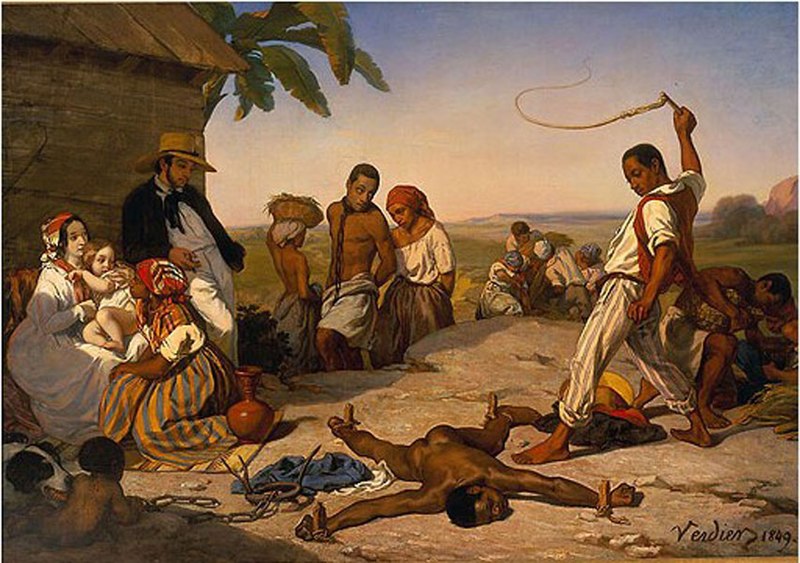
Terror, torture, violent crimes, sacrifices, authorised by the Napoleonic Code in 1804, made it possible to set up a form of terrorism in order to abort any attempt at rebellion and maintain order in the colony. The authority of the master was absolute, depriving the slave of humanity. The Black Code became the symbol of negation of man by man. Punishments were also meted out in public, before the eyes of everyone, marking the flesh and the body of individuals, as a form of transmission and a way of cultivating shame (Eve, 2010). The works of historians describe the birth of two internal conflicts within the slave as individual, expressed in the accounts recorded (Eve, 2010; Fuma, 1992; Gerbeau, 2005; CIHOI-CRESOI, 2018): a “slave-self” faced with submission to the Master and a “master-self” (to himself), having the capacity to imitate the domination exercised over them, generating behaviour of rebellion and maroonage , at times even of suicide, as an act of liberation.
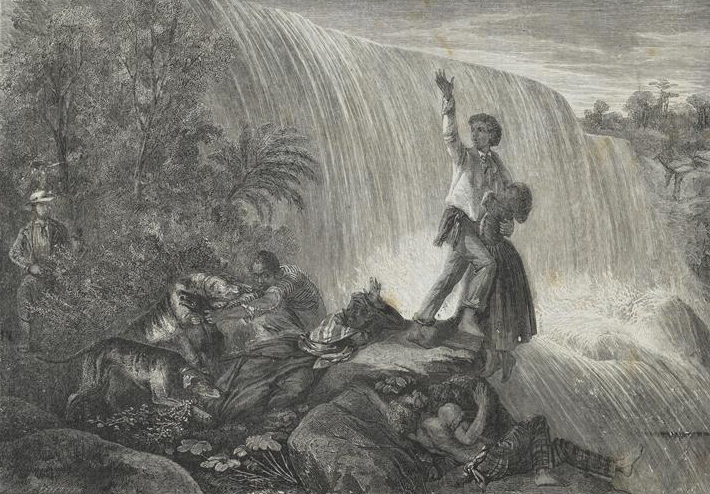
Since the abolition of slavery, indentured labour , followed by the desire to modernise linked to the project to make the island a French department in 1946 (original form of decolonisation), the social structure of the society on Reunion island has evolved very little. Historical theories concerning the memory of slavery partly enable us to understand today’s society and the behaviours, attitudes or daily experiences of individuals, in order to understand how the process progressively developed. There seems to be, therefore, a certain internal logic for the model to be reproduced. In addition, this absence of a narrative concerning people’s origins appears to play an essential role in the family memory, deprived of any possibility of expression and common construction between the individual identity, that of the group, through its functions of transmission, of reawakening of the past, of awareness of a trajectory and time-line, necessary to the formalisation of a symbolic space between the individual and the social, between the intimate and the private, between the collective and the public (Anne Muxel, 1995, 1996).
How to perceive and treat these complex family dynamics, when violence seems to be transmitted between generations in a transversal manner? What is the history in which these acts of violence are rooted? What do they tell us about the past? Or, on the contrary, what has not been sufficiently expressed or has been denied?
Applying a psychoanalytical anthropological approach, the idea is to focus on the symbolic function of the culture within the structuring of the intra-family and intergenerational social link, as expressed by Mauss (1923) and Lévi-Strauss (1950) in his introduction to the work by Mauss. Can we not say that violence has taken over from a negative acculturation even de−culturation, reflected in traumatism, seemingly linked to the traumas of history? How can this breach in intergenerational transmission, in respect of both lineage and culture, be applied today to the issue and singular character of the subject, on the intra-psychic and interpersonal level and contribute to a specific psychopathology not yet taken into consideration by contemporary psychiatry? In addition, we need to question these violent acts, that are also totally interwoven with any capacity of expression through the language, and pinpoint the effects of “transmission failures” in respect of lineage. (Govindama, 2001).
Indeed, in the absence of the structuring and symbolic function of the culture, we can observe an important imbalance regarding the forms of parentage, myths, customs and laws common to all societies. All this recalls the context of colonisation and the notion of acculturation, where the assimilation of the culture appears forced, organised and imposed by the society. In 1992 Prosper Eve published a remarkable study entitled “l’île à peur” (Island of fear). In his opinion, despite the many generations separating us from the period of slavery, the trauma of servitude still explains behaviours, rooted in the transmission to future generations, where fear destroys our relationship with others. According to the author, the culture of Reunion was thus constructed on the basis of a certain fatalism, accompanied by multiple magic-religious practices, aimed at warding off evil. The other, different from oneself, thus becomes threatening or a persecuting enemy. The worrying strangeness, as expressed by Freud (1917), was cultivated through the context of slavery and colonisation.
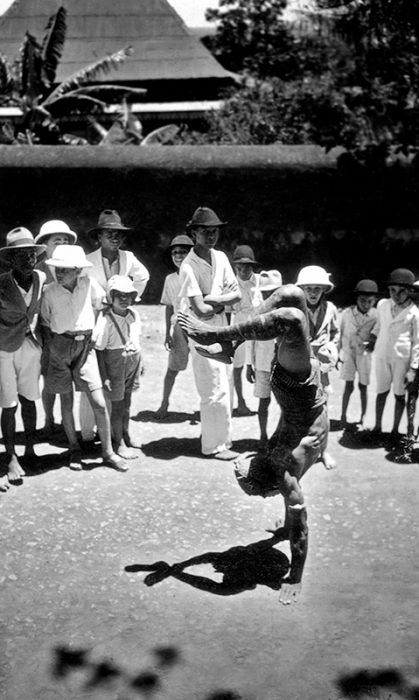
According to Cambefort (2008), slavery appears to have resulted in the destruction of cultural references, and the destruction of filiation, for example through the denial and replacement of patronymics. This destruction of filiation also resulted in a profound imbalance regarding parental images and representations of the man and the woman. Above all, it seriously undermined the parental function, the image of the father and what he represents in relation to the mother in his educational relations with the children.
What can we say concerning the organising function of the Law, if even those whose role it is to guarantee it are corrupt, if injustice, impunity and the illegitimate reign supreme, if the landmarks guaranteeing symbolic order are deficient, if the other is not recognised? What place does the woman occupy in relation to the man? We know, notably, that according to the Black Code, she had certain rights (over the child, therefore over filiation, regarding the possibility of emancipation, also the money received for the child, resulting in a system set up since the child’s birth on the principle of the mother-centred family). The family structure referred to as mother-centred, the father being absent, described by Leloutre (1968), is characteristic of postcolonial family groups, with an inevitable impact on the man/woman relationship.
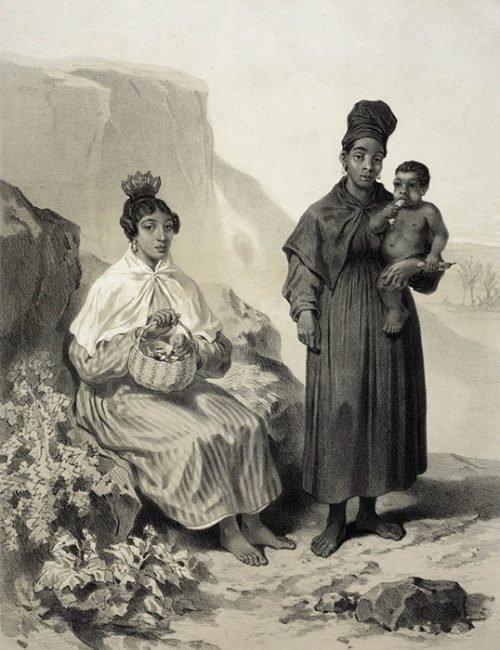
In view of the family restructuring imposed on the society of Reunion, the question today concerns the descendants of these slave populations: how to claim an origin regarding their ancestors, when filiation was originally forbidden? Is the only remaining possibility as the means of belonging for certain persons the colonial ideal and for others the non symbolic means of violence? Concerning intra-family violence, Pierre Benghozi (2010) speaks of identity genocide and proposes the notion that the paradigm of violence could be shame and humiliation. From an intra-psychic point of view, violence appears to take on a primitive form, as defined by Bergeret (1984), that is to say not suppressed, due to the ineffective character of the symbolic function of the culture.
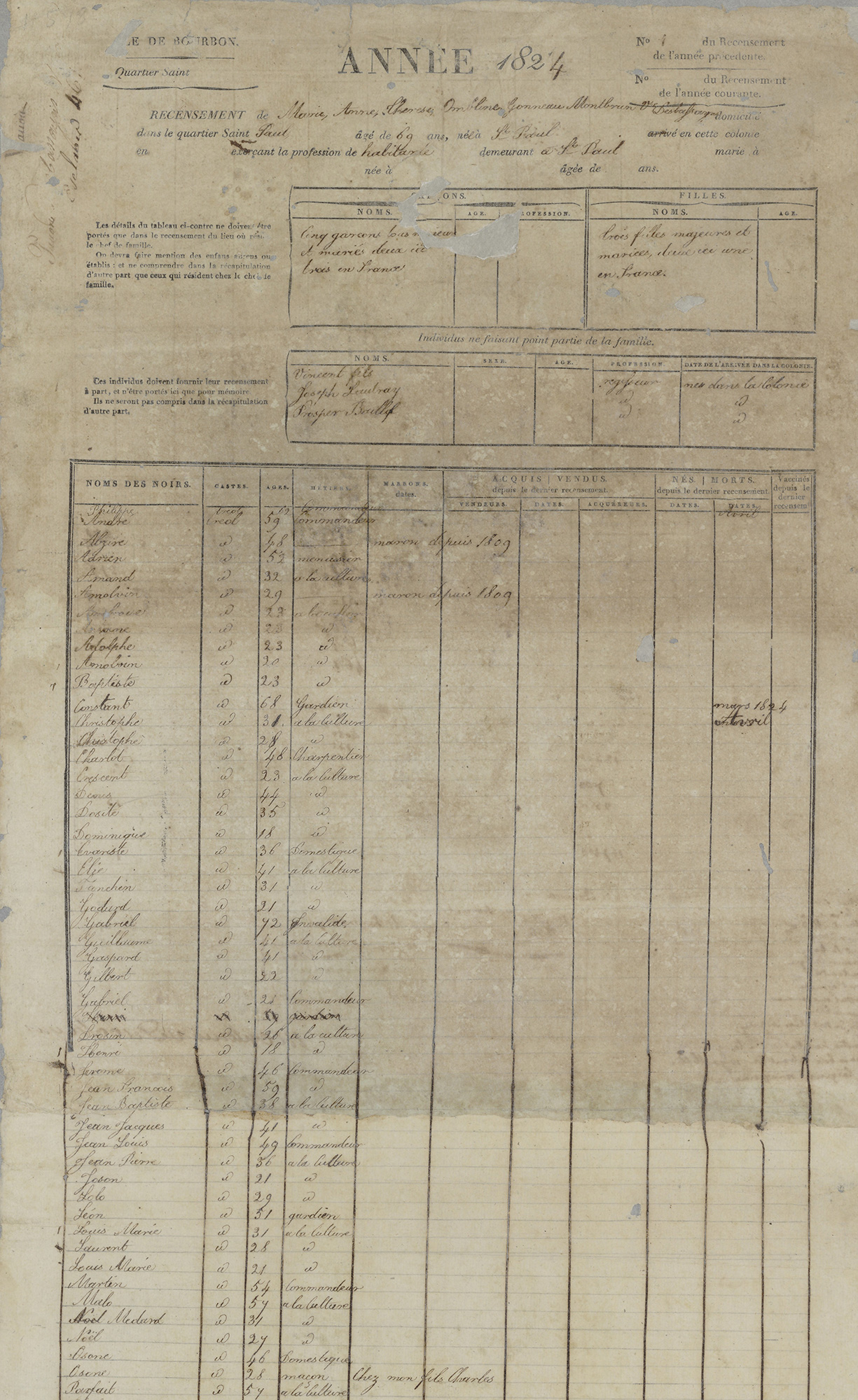
In the families where the members transgress the law, we validate the hypotheses that these acts are linked to the deficiencies of intergenerational transmission regarding breaking the law within the order of filiation, thus recalling the notion of traumatic filiation as defined by Marty (2001). It thus reflects the problems of transmission handed down through generations, without, however being symbolised. This inflation of the imaginary to the detriment of the symbolic provokes an “abnormal psychic permeability between individuals and generations” which, in its turn, leads to a repetition of traumatic events (J. Guyotat, 1980).
The object of this research concerning the historical traumatism of slavery leads to multiple questions. The history of the settlement of the islands led to the destruction of the family cell on Reunion, with trauma as the founding myth, expressed still today through the bare residues transmitted within the trans-generational, handed down through the generations unknowingly and in a pathological manner. Irregular alliances, linked to racial mixing, at the time prohibited, today lead to a repetition of the colonial model and its representations. The fundamental violence occurs where transmission is absent in the symbolic, expressing the quest for identity and the generational, as well as the abolition of fundamental taboos. History remains cryptic.
ANDREWS, G-R. 2014. “Inégalité raciale au Brésil et aux États-Unis: comparaison statistique”, Brésil(s), Vol. 5, Paris: CRBC-Mondes Américains/EHESS
BENGHOZY, P. 2010. “La violence n’est pas l’agressivité: une perspective psychanalytique des liens”, Revue de psychothérapie psychanalytique de groupe, Toulouse: Erès
BENOIST, J. 2001. Santé, société et cultures à la Réunion. Anthropologie médicale, psychiatrie, Paris: Editions Karthala
BERGERET, J. 1984. La violence fondamentale, Paris: Bordas
BONNIOL, J-L. 1992. La couleur comme maléfice. Paris: Albin Michel
CAMBEFORT, J.P. 2008. Enfance et famille à la Réunion, une approche psychosociologique, Paris: l’Harmattan
CHARLES-NICOLAS, A. 2018. L’esclavage : quel impact sur la psychologie des populations, Paris: Idem Editions
Code noir, 1685, Édit du Roy concernant les droits des maîtres et les devoirs des esclaves…
COMPAGNONE, P. 2010. “Le génogramme : et si on le remettait à l’endroit”, Le journal des psychologues, Vol.8, n°281, p. 18-22
DEGRUY, J. 2004. Post traumatic slave syndrome, America’s Legacy of Enduring Injury and Healing, Oregon: Uptone Press
DEVEREUX, G. 1967. De l’angoisse à la méthode, Paris: Flammarion
EVE, P. 2015. Nouveaux propos sur les femmes à Bourbon – La Réunion : XVII-XXème siècle, Sainte-Clotilde (Reunion island): Surya éditions
EVE, P. 2010. Le bruit du silence. Parole des esclaves de Bourbon à la fin du XIIème siècle au 20 décembre 1848, Saint Denis (Reunion island): Océan Editions
EVE, P. 1992. Ile à peur. La peur redoutée ou récupérée à la Réunion des origines à nos jours. Saint André (Reunion island): Océan Editions
EYERMAN, R. 2001. Cultural trauma: slavery and the formation of African American identity, Cambridge: Cambridge University Press
FOHLEN, C. 2007. Histoire de l’esclavage aux États-Unis, Paris: Perrin
FANON, F. 1952. Peaux noires, masques blancs, Paris: Editions du Seuil
FREUD, S. 1917. Introduction à la psychanalyse, Paris: PUF
FUMA, S. 1992. L’esclavagisme à la Réunion: 1794 – 1848, Paris: l’Harmattan
GANEM, V. 2012. La désobéissance à l’autorité: l’énigme de la Guadeloupe, Paris: PUF, Collection Souffrance et théorie
GERBEAU, H. 2005. L’esclavage et son ombre, L’île Bourbon aux XIXème et XXème siècle. Doctoral thesis, Université de Provence, Aix-Marseille I
GERBEAU, H., ASGARALLY, I., REVERZY, J-F. 2005. De l’esclavage, Saint Denis (Reunion island): Océan Editions
GHASARIAN, C. 2002. “La Réunion: acculturation, créolisation et réinvention culturelle”, Ethnologie Française, Vol. 34, n°2, Paris : PUF
GOVINDAMA, Y., 2001. “Esclavagisme et acculturation: déni du traumatisme comme mécanisme de défense” In Stress et trauma, n°3, vol. 4, p. 255-262
GOVINDAMA, Y. 2003. “Culture et unité somato-psychique”, Enfance et Psy, vol. 20, n°4, Toulouse: Erès
GOVINDAMA, Y. 2011. Temps et Rites de passage. Naissance, enfance, culture et religion, Paris: Karthala
GUYOTAT, J. 1980. Mort, naissance et filiation: étude de psychopathologie sur le lien de filiation, Paris, Masson
HOARAU, S. 2010. “Traces et présences des servitudes passées dans l’espace imaginaire de la littérature réunionnaise contemporaire. Quelques pistes de reflexion”, Les traites et les esclaves, Paris: l’Harmattan
HONORE, D. 1994. Kroyans (Superstitions à la Réunion), Saint-Denis (Reunion island): Editions Udir
LELOUTRE. J.C. 1968. La Réunion département français, Paris: Maspero
LEMAIRE-ARNAUD, E. 1985. “Utilité du génogramme pour la mise à jour des phénomènes transgénérationnels?”, Dialogue, n° 89
LEVI STRAUSS, C. 1950. Introduction à l’œuvre de Marcel Mauss, Paris: PUF
MARTY, F. et al. 2001. Figures et traitements du traumatisme, Paris: Dunod. Collection Inconscient et culture.
MAUSS, M. 1923. “Essai sur le don”, Sociologie et anthropologie, Paris: PUF
MULOT, S. 2007. “Le mythe du viol fondateur aux Antilles françaises”, Ethnologie Française, Vol 37, n°3, Paris: PUF
NEUBURGER, R. 1985. Le mythe familial, Paris: ESF Edition
ORS-OI, 2015. Rapport d’étude : état des lieux de la prise en charge des femmes victimes de violences conjugales à la Réunion, situation en 2014, www.ors-ocean-indien.org
REVERZY, J-F. 2008. Le complexe de l’esclavage à la Réunion, Paris: Editions ARCC
VERGES, F. 2006. La Mémoire enchaînée. Questions sur l’esclavage. Paris: Albin Michel